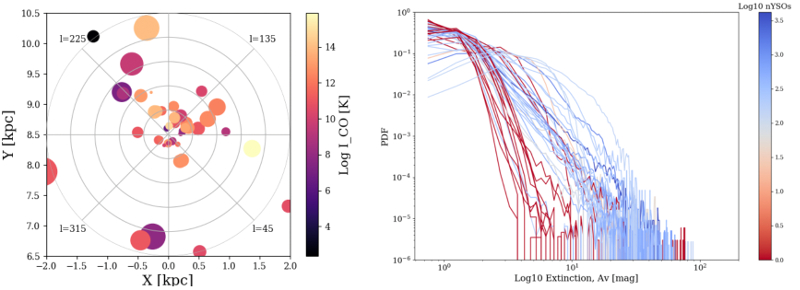| EPoS Contribution |
|
Bird's-eye view of the local Galactic environment: Velocity Statistics
Andri Spilker CTH, Gothenburg, SE | |
| A crucial aspect in interpreting the scaling relations relevant for star formation - the Kennicutt-Schmidt relation and Larson's relations - is how they depend on the size-scale. This is especially so when comparing relations derived from unresolved, extra-Galactic data to those derived from resolved, Galactic data. We present an experiment in which the Solar neighbourhood (distance < 2 kpc) is examined from the outside, with the aim to unveil the connection between the true, "resolved" properties of star-forming regions and their beam-averaged, "unresolved" properties. To do so, we examine the velocity, density, and star formation statistics in the molecular gas of the Solar neighbourhood and determine how they appear when viewed through apertures of various sizes. In this way, we connect the average properties of the gas to the resolved properties of individual clouds. Our results will aid the interpretation of on-going and upcoming extra-Galactic observations, especially by shedding light on the sub-beam properties of the structures detected by them. | |
 | |
| Caption: Left: A complete sample of the large molecular clouds in the extended Solar neighbourhood (d<2kpc) seen face on, with colour corresponding to CO brightness. We study this sample in density, velocity and star formation characteristics, as individual clouds and through apertures of various sizes. Right: Column density probability distributions of the molecular clouds, colour coded after number of YSOs within the cloud. | |
| Collaborators: J. Kainulainen, Chalmers, SE M. Zhang, PMO, CN |
Key publication
Suggested Session: Turbulence |

